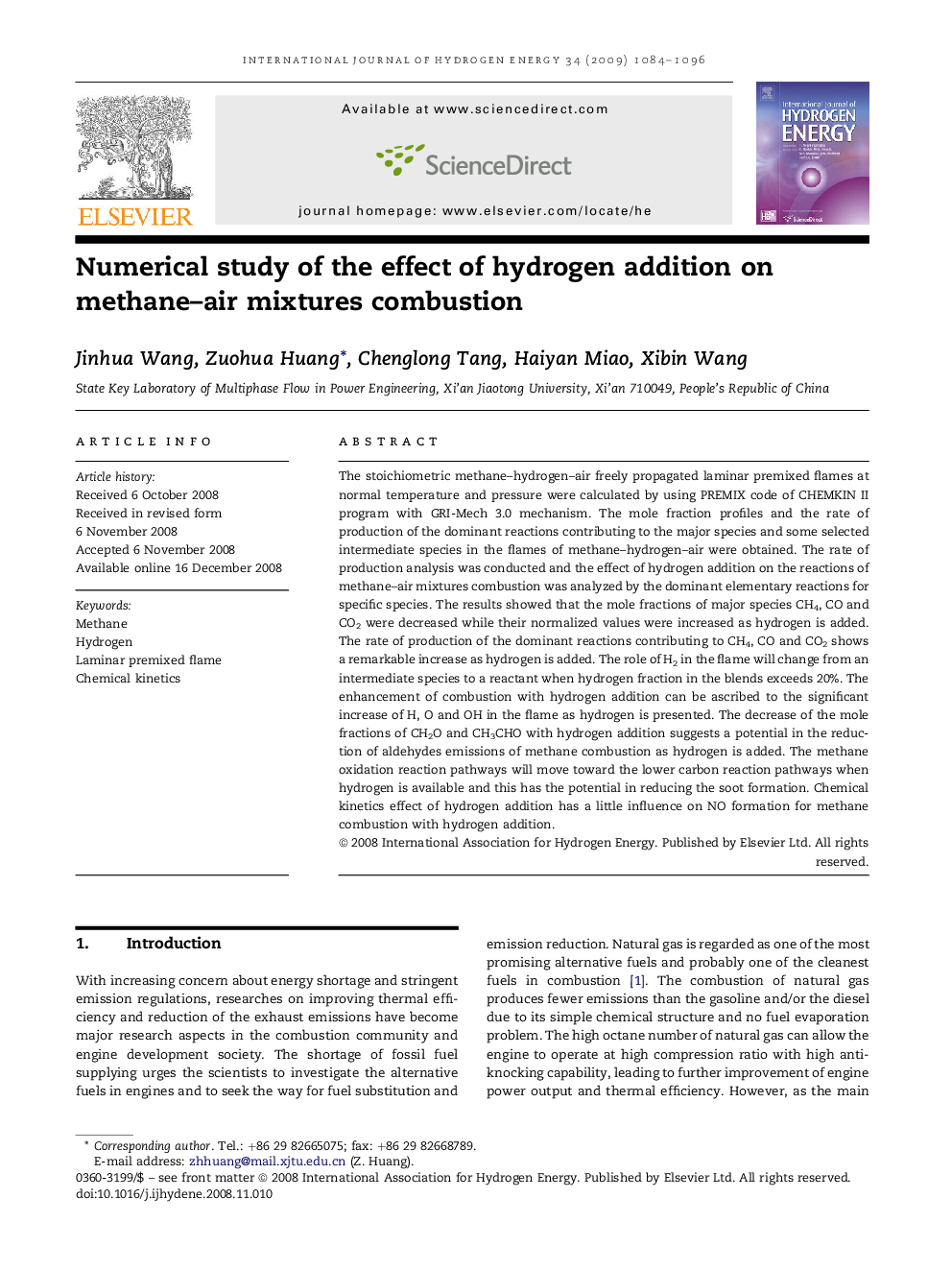| Article ID | Journal | Published Year | Pages | File Type |
|---|---|---|---|---|
| 1283493 | International Journal of Hydrogen Energy | 2009 | 13 Pages |
The stoichiometric methane–hydrogen–air freely propagated laminar premixed flames at normal temperature and pressure were calculated by using PREMIX code of CHEMKIN II program with GRI-Mech 3.0 mechanism. The mole fraction profiles and the rate of production of the dominant reactions contributing to the major species and some selected intermediate species in the flames of methane–hydrogen–air were obtained. The rate of production analysis was conducted and the effect of hydrogen addition on the reactions of methane–air mixtures combustion was analyzed by the dominant elementary reactions for specific species. The results showed that the mole fractions of major species CH4, CO and CO2 were decreased while their normalized values were increased as hydrogen is added. The rate of production of the dominant reactions contributing to CH4, CO and CO2 shows a remarkable increase as hydrogen is added. The role of H2 in the flame will change from an intermediate species to a reactant when hydrogen fraction in the blends exceeds 20%. The enhancement of combustion with hydrogen addition can be ascribed to the significant increase of H, O and OH in the flame as hydrogen is presented. The decrease of the mole fractions of CH2O and CH3CHO with hydrogen addition suggests a potential in the reduction of aldehydes emissions of methane combustion as hydrogen is added. The methane oxidation reaction pathways will move toward the lower carbon reaction pathways when hydrogen is available and this has the potential in reducing the soot formation. Chemical kinetics effect of hydrogen addition has a little influence on NO formation for methane combustion with hydrogen addition.
